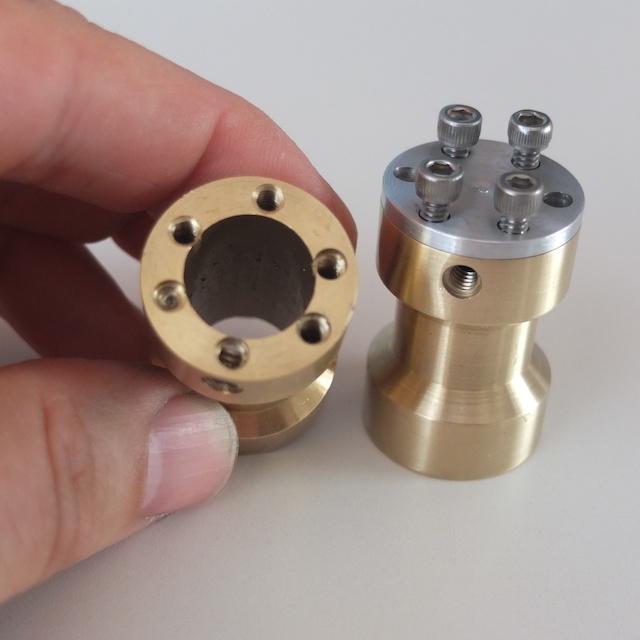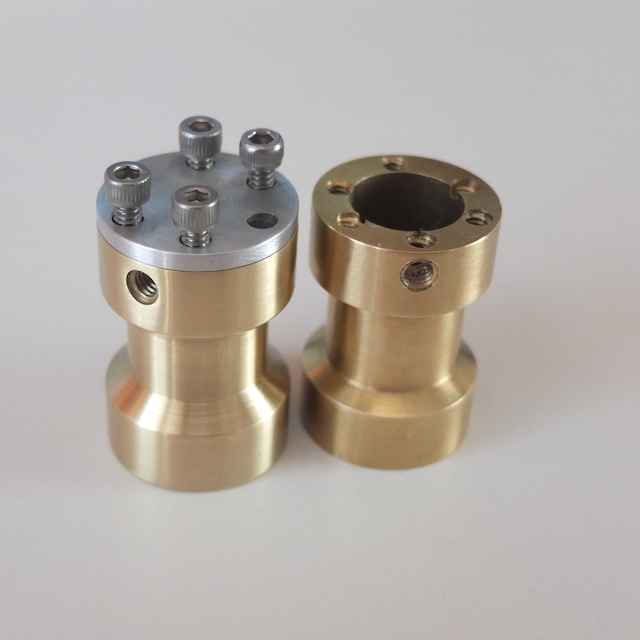Ok, so the centering operation turned out to be the easy part. I used two methods - first was the plug method - turned a simple plug as shown in Bogstandards drawing and had the cylinder centered in about 20 mins. Works quite well - but turning the plug did require a lot of test-fit to the cylinder to ensure accuracy.
Second was removing the swivel base from my milling vise, squaring it up to the mill, then using the DTI in a drill chuck. I think this is the way to go for repeatability and speed. But now I have a couple of new skills under my belt, and I'm beginning to learn how to think around challenges with a broader set of possible solutions to choose from..
Anyhow. No matter that I was able to center the cylinder under the spindle - the next challenge was to drill and tap the top and bottom bolt rings. Well.... feeling rather confident after my centering victory, I decided to rely on the X2 mill graduated dials to find my drill centers. So I proceeded to dial-in, center drill, tap drill, tap and repeat - I did all of this through the cylinder cover, (as the directions suggest) so I was not able to check the bolt ring directly on the top face of the cylinder. Well.... I was most unpleasantly surprised to discover my results - upon removing the part from the milling vise after my carbide center drill broke off in the very last hole!! Not only were the holes improperly indicated - I neglected to alleging the part properly and ended up drilling and tapping directly into the cylinder port. :

So, I've lost all confidence in using the dials on the X2 alone to find my way. I think there is too much slop, backlash and just plain inaccuracy in the mini mill to rely on the dials as they come factory finished. I'm thinking a DRO or even CNC conversion may be in the cards if this machine is to be used with repeatable accuracy?
So, after destroying one cylinder, I turned up a second, made the cylinder cap and this time, used a dial height gauge and to scribe the parts - then used the pointy center finder to locate under the mill. This time - not absolutely perfect - but within acceptable, (first engine) tolerance I think. Thm:
Results below:







